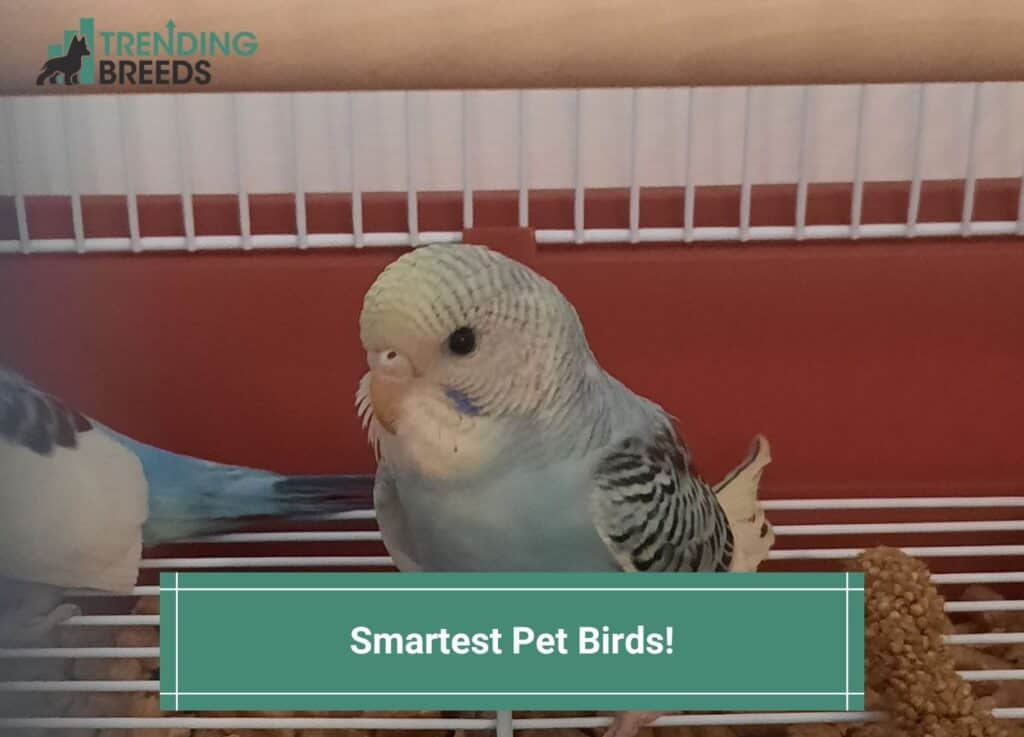
Birds make great pets as long as they are cared for properly and trained. There are some birds that are easier to train and make better pets than others. If you want a trainable, talking bird, check out the smartest pet birds and see which one fits your lifestyle.
These are also some of the most popular birds. If you are planning to bring a bird into your family, be sure to choose the right type for your lifestyle.
Before you scroll further down this guide, check out these other bird-related articles: Why Do Birds Have Hollow Bones? and Why Do Birds Chirp at 3 am?.
Table of Contents
1. Macaws

These beautiful birds are initially from Central and South America and are some of the largest pet birds you can get. Not only that, they’re also super smart!
Macaws love socializing with their owners and can be trained to do all sorts of cool things, like talking, mimicking, and perching.
Plus, they’re very colorful and make for great company.
However, it’s important to remember that macaws are also very loud and need quite a bit of space to stretch their wings.
So, they might not be the best fit for every household. But if you have enough room for them, they’re totally worth it!
One of the coolest things about macaws is that they enjoy making tools and communicating with other pets in the house.
They’re known for mimicking sounds really well, so you can teach your pet macaw tons of words and phrases that they can use to interact with you.
All in all, macaws are amazing creatures that make for great pets.
Just make sure you’re prepared for their unique needs, and you’ll have a lifelong friend that you can enjoy spending time with.
2. African Gray
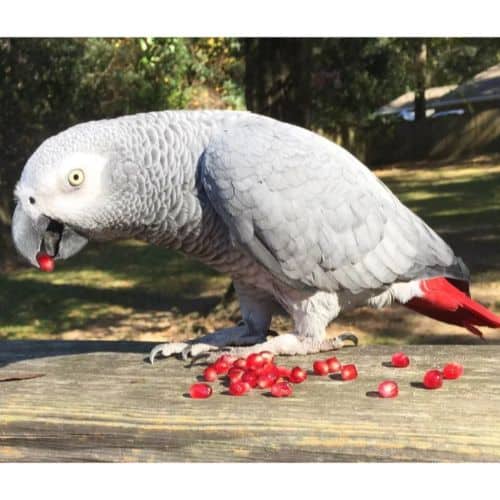
African Grays are some pretty amazing birds! These birds are super intelligent and can easily learn how to talk and make noises.
They can even learn colors and counting with a little extra effort in training!
But you should know that they require a lot of socialization and mental stimulation.
That’s where training sessions come in handy, not only building a bond between you and your pet bird but also providing important mental enrichment.
Many people put African Grays at the top of the list for bird pets.
And what makes them even more special is that they don’t just repeat what you say. These birds can understand a lot of what you say to them.
In fact, if you teach your African grey to ask for things, you’ll be surprised at how well he can identify what he wants.
But don’t forget, because these birds have an intelligence level similar to that of small children, they need plenty of mental nourishment.
If they don’t receive enough, they may start to act out in ways similar to a misbehaving child. So be sure to keep your African grey entertained and stimulated!
3. Amazon Parrots

Amazon parrots are a diverse group of birds, but all of them are known to be highly trainable.
Despite their reputation for having difficult personalities, they thrive on social interaction and mental stimulation.
That means you’ll need to give your Amazon parrot plenty of attention and opportunities to play with fun toys and engage in training sessions.
The good news is that spending time with your Amazon parrot can be fun.
These friendly birds love to chat and sing, so you can even get them to join you in your favorite songs.
Plus, if you spend enough time training your bird, you may be surprised to find that they’re capable of mimicking human speech almost perfectly.
In fact, some Amazon parrots are so good at imitating speech that it’s hard to tell the difference between them and a real person.
Of course, it’s important to remember that Amazon parrots have big personalities, so they’ll need plenty of attention and stimulation to be happy.
But if you’re up for the challenge of raising these smart and social birds, they can make fantastic pets.
4. Cockatoos
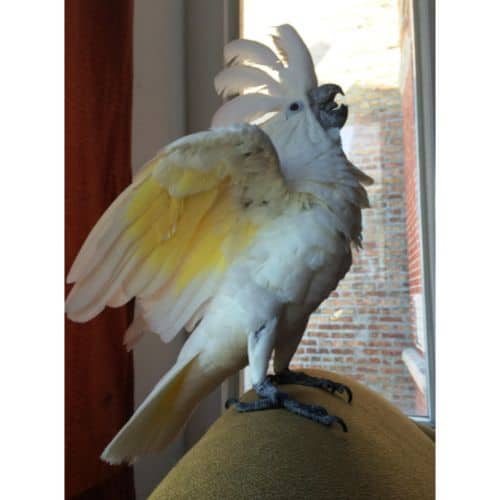
Cockatoos are a pretty interesting bunch. They’re not only great characters, but they’re also highly trainable.
The characteristic crest on top of their head sets them apart from other birds.
They can hold it erect for various reasons like fear, excitement, or aggression. Pretty cool, right?
These birds are known for holding their crest up even while performing a trained behavior. It’s because they’re just having such a great time!
Cockatoos have unique personalities that make them stand out from other birds.
They may not chat your ear off, but they have an incredible attitude and love playing games and solving puzzles.
You’ll bond deeply with your feathered friend because their intelligence is much more social.
However, don’t forget to give them plenty of alone time to entertain themselves.
Watching them solve problems can be fun, but sometimes, this can mean trying to escape their enclosure.
So, it’s best to watch them and design their home accordingly.
5. Budgies
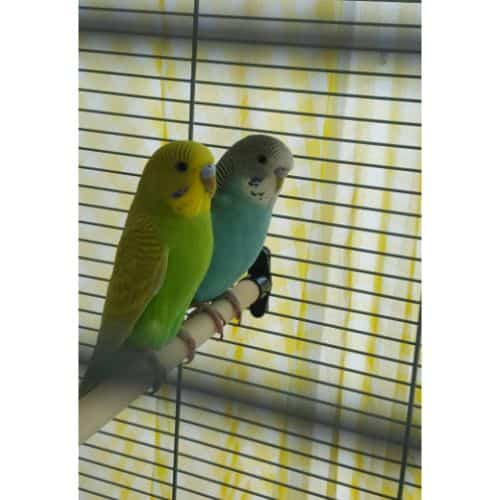
Budgerigars, commonly known as parakeets, are native to Australia.
These little birds may be small, but they are mighty in their ability to be trained to talk and do tricks.
In fact, they can learn up to 200 words! And the best part is, since they’re small, they’re not nearly as loud as their larger cousins.
But that’s not all! Budgies are also much cheaper than larger birds, and you can easily find them at your local pet store.
Plus, they don’t take up as much space as other birds, making them perfect for those with limited living quarters.
If you’re worried about them feeling lonely, fear not! Parakeets love to hang out with each other, and even in the wild, escaped budgies have formed large flocks.
These birds have lovable personalities and make great companions.
While they may not be as intelligent as some other species, they definitely make up for it with their charm.
So, sure, they may only be able to learn a few words, but they will respond to your speech and will definitely brighten up your day with their cute chirps and colorful feathers.
6. Conures
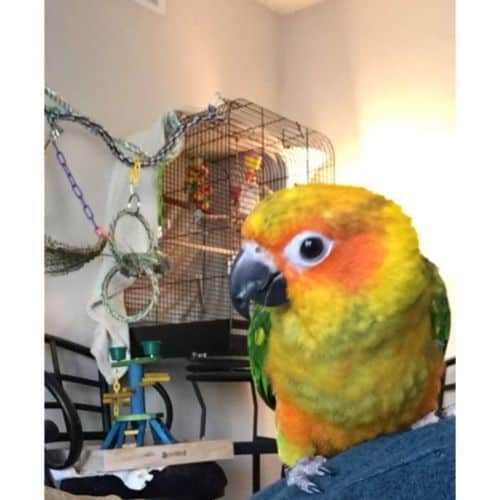
Conures are among the most intelligent species of birds, along with lovebirds and some parakeets.
They have an excellent affinity for toys and games, so it is essential to incorporate fun activities into their daily routine.
Additionally, providing a conure with a friend will ensure they have company and prevent them from getting lonely when left alone.
These birds require physical and mental stimulation, as they enjoy problem-solving and staying active.
There are various species of conures, but most are known for being sociable, energetic, and excellent learners.
It is easier to train younger conures, but some species are known to use their feet to pick up objects, which can lead to them developing unique talents.
Conures are not renowned for their talking abilities, but they make up for it with their ability to learn other tricks and behaviors.
7. Eclectus
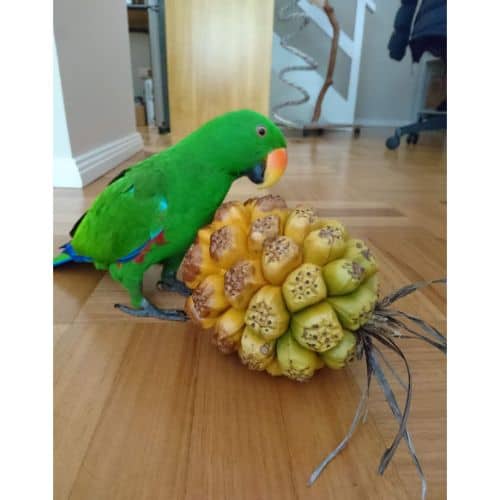
Eclectus parrots are quite a fascinating species, and one of the most notable features about them is the significant difference in appearance between males and females.
Despite their striking and beautiful colors, Eclectus parrots are not just a pretty bird but also highly trainable.
They excel in language acquisition and can learn new actions and phrases easily.
However, they are not just passive learners; they can also pick up habits and words on their own, so it’s important to be mindful of the behaviors and phrases they are exposed to.
By being aware of positive and negative influences in their environment, you can help ensure that your Eclectus parrot doesn’t learn any undesirable behaviors or phrases.
Tips For Training Your Pet Bird
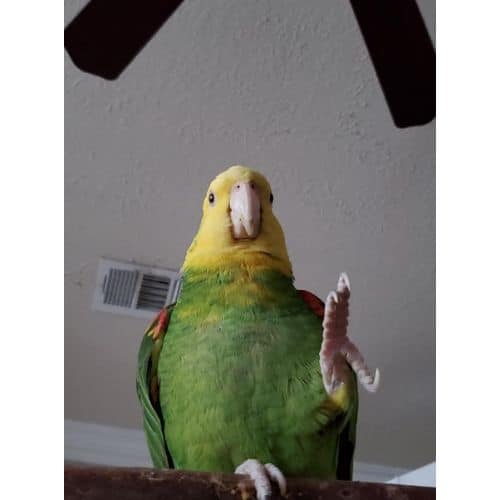
These tips can help make training your bird a little easier and more enjoyable for both of you.
Reward Good Behavior
When your feathered friend finally manages to step up onto your finger, make sure to reward them right away!
This is a crucial part of the training process that a lot of bird owners overlook. The key is to pair your verbal praise with the treat.
So, as soon as your parrot steps up, make sure to say “Good bird!” in a cheerful tone while giving them a tasty treat that they love.
This way, they will instantly realize that their good behavior is what led to the treatment and the loving words.
Quick timing is also important so that your bird connects their action and the positive reinforcement.
By consistently following this technique, you’ll be able to train your parrot to repeat the behavior, and in no time, you’ll have a happy and obedient companion bird!
Offer Special Treats
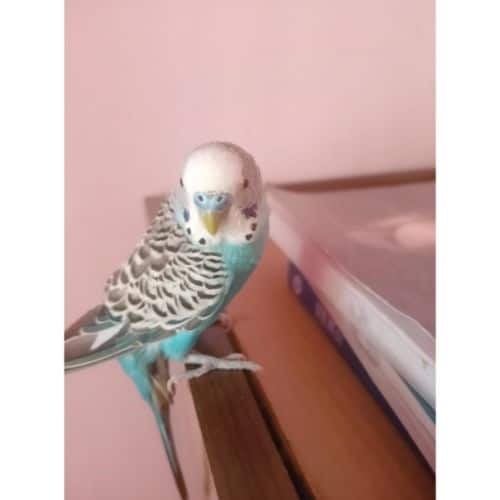
Have you ever tried training your parrot with treats? Well, if you haven’t, you definitely should! However, not just any treats will do the trick.
You need to find high-value bird treats that will motivate your feathered friends to start learning.
But how do you make a treat extra special? Let me tell you, it’s all about making it their favorite food.
Every parrot has a favorite food that they absolutely love, and you need to find out what that is.
For larger parrots, pine nuts out of the shell seem to be a popular choice. You can also increase the value of the food by making it a rarity.
This means they should only get this special treat from their trainer. If they receive it all the time, the treat can lose its value in their eyes.
So, it’s important to remember this if you want to keep your pet bird motivated to learn from you.
Pick The Right Time of Day For Training
If you want to train your pet bird effectively, it’s important to do it throughout the day. There’s one time that works better than all the others.
And that is in the morning when your bird has just had a good night’s sleep and should be feeling fresh and alert.
If you try to train a tired or cranky bird in the evening, it’s unlikely to be a very productive session.
When you do train your bird, it’s best to keep the sessions short and sweet, lasting no more than 2-3 minutes at a time.
However, if your bird seems to be really enjoying the training and is highly engaged, it’s okay to keep it going for a little longer.
The key is to watch your bird’s body language and look for signs of getting tired or distracted.
If they start stretching or preening instead of listening to your cues, that’s a good indication that they might need a break.
Training your bird isn’t just about teaching them tricks or commands – it’s also a way to bond with your feathered friend and provide them with mental stimulation.
So, if you’re looking for a rewarding activity to share with your bird, try some morning training sessions and see how it goes!
Gain Your Bird’s Trust
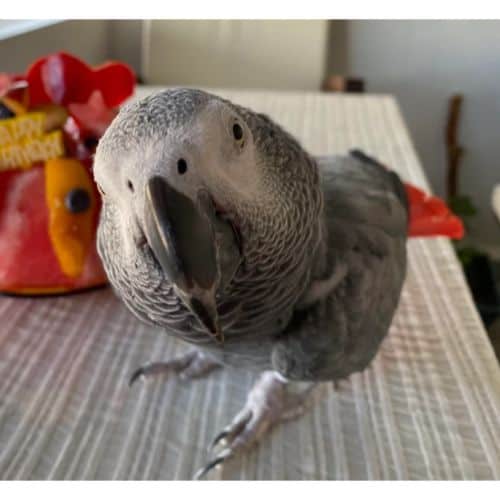
When it comes to bird training, the place where you do it is crucial. It would help if you chose a spot that’s free of distractions, like those found inside a birdcage.
That way, your feathered friend can focus on the task rather than its toys and food.
To help parrots concentrate, set up a designated bird training stand.
Not only does it foster better focus during training sessions, but it’s also something her birds get genuinely excited about.
Before you start training your pet bird, you need to ensure it feels comfortable around you.
If your bird doesn’t trust you, you won’t get very far with training. To build trust with your lovebird, speak softly to it, play some calming music, and offer it some fruit.
Your ultimate goal is to create a safe and secure environment where you and your bird can bond.
Your bird must be used to seeing and hearing you before you start training it. If it’s already scared of you, then you won’t be able to make much progress.
In fact, it’s dangerous to raise your voice during training sessions since birds are sensitive creatures that easily startle when they hear sudden noises.
Instead, whistle softly to get your lovebird’s attention, and wait for it to respond to you.
If you find this guide, “Smartest Pet Birds,” informative and helpful, you can check out these other bird-related articles from our team:
- Why Do Birds Fly in Circles?
- Why Do Birds Throw Babies Out of the Nest?
- Why Do Birds Take Dirt Baths?
You can learn more about birds by watching “Pros and Cons of 16 Species of Pet Birds” down below:




